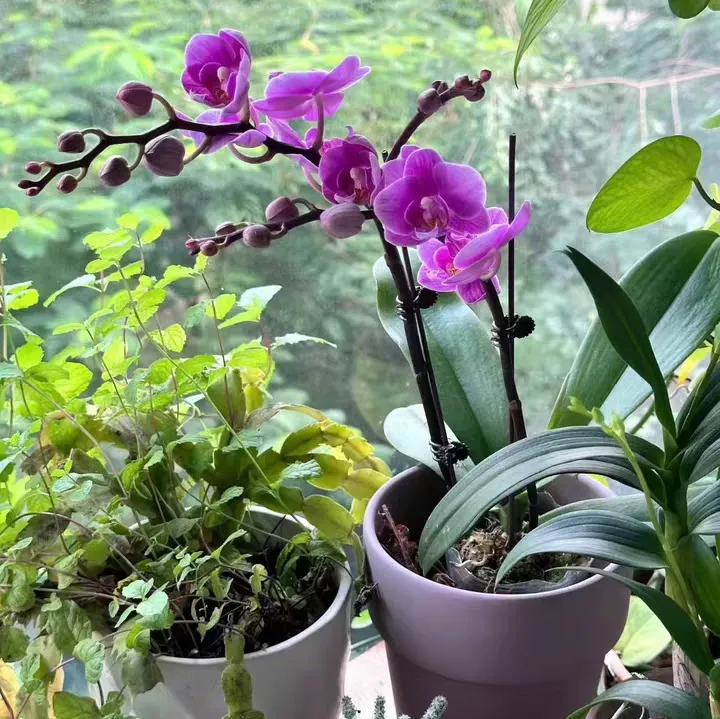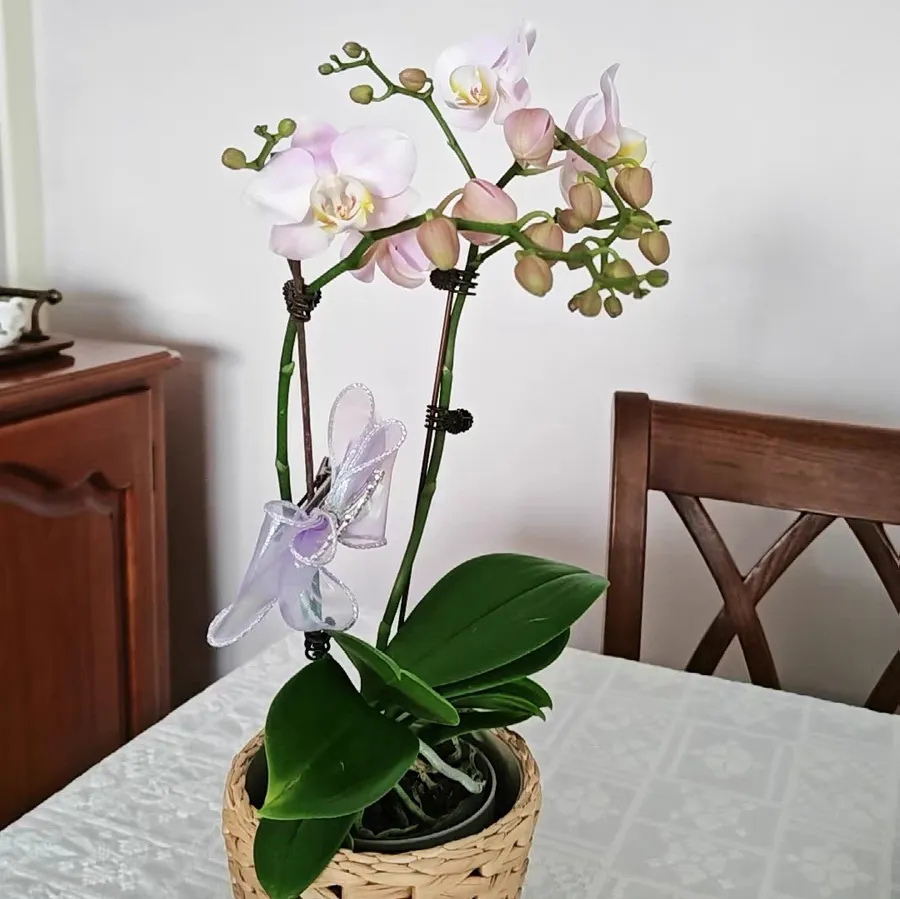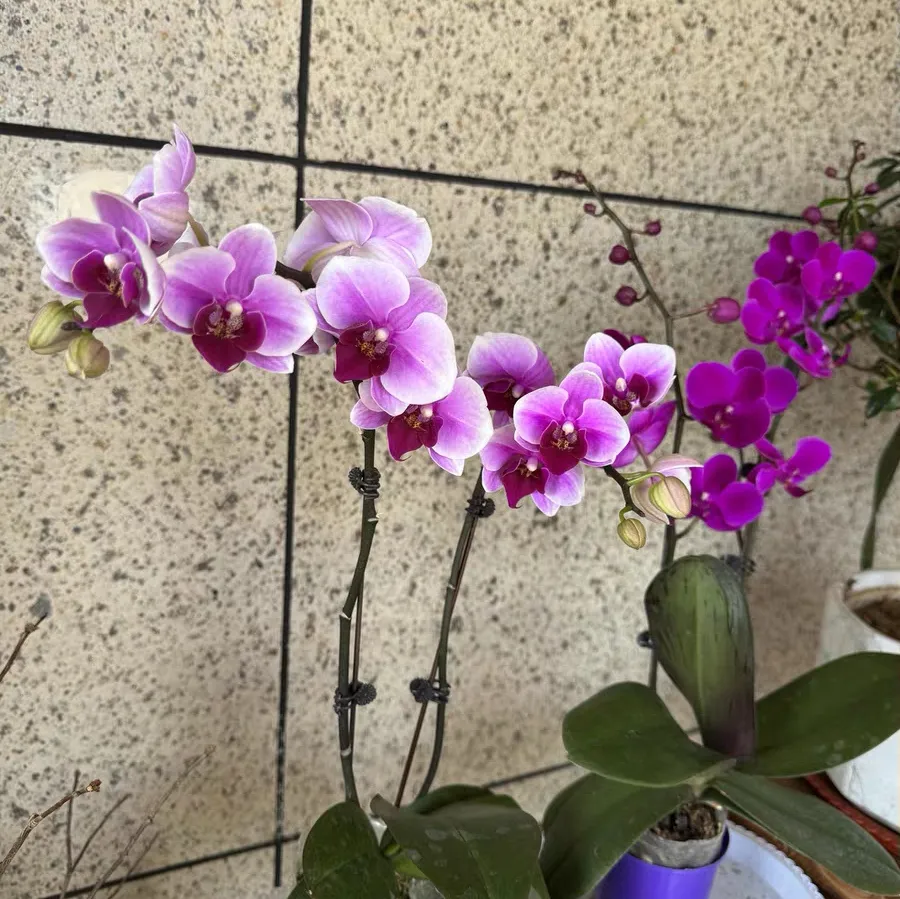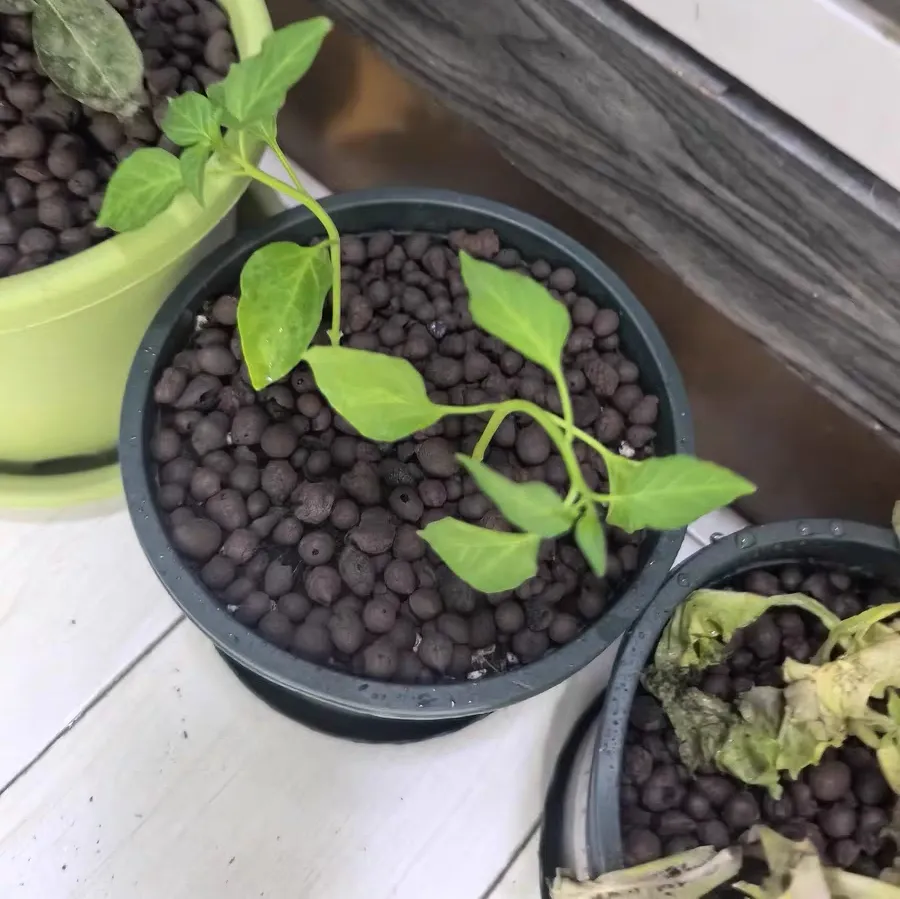Novice flower growers often have trouble distinguishing between the roots and the crystal tips of Phalaenopsis orchids. In fact, as long as you remember these few tips, you can tell them apart at a glance.
## Significant Differences
- **Position**: The roots of Phalaenopsis orchids are distributed flexibly on the plant, without a fixed growth point. They emerge from multiple parts such as the base of the stem and spread freely around the plant to find suitable attachment points and growth spaces. The crystal tips, on the other hand, are special structures that grow from the tip of the root and are clearly located at the very front of the root system.
- **Shape**: The roots of Phalaenopsis orchids are cylindrical in overall shape, with a relatively rounded top. As they grow, the roots continue to extend and gradually become long, thin, and tough, providing a stable support and a nutrient - transporting channel for the plant. The crystal tip, as a special part of the root tip, has a unique shape. Its color is a delicate blend of red, green, and yellow, with a natural color transition. Moreover, the crystal tip is plump in texture and shiny on the surface, making it particularly eye - catching under light.
- **Direction**: The roots of Phalaenopsis orchids have a clear growth direction. They take root in the substrate to absorb water and nutrients, and some roots grow horizontally on both sides towards the leaves to find a humid environment or a suitable attachment in the air. As the tip of the root, the growth direction of the crystal tip mainly depends on the overall growth trend of the root system and the stimulation of the surrounding environment, and its direction is relatively not fixed.
- **Color**: In the early stage of growth, the roots of Phalaenopsis orchids are often slightly green or light brown. As the roots mature and grow to a certain length, the color of the roots will gradually fade and turn white. The crystal tip, however, always maintains a fresh color, with a fresh greenish feeling.
## Key Points for Broken Root Treatment
When the roots of Phalaenopsis orchids are broken, the treatment method should be determined according to the specific situation. If the broken part of the root has not rotted, even if the root is broken, the remaining part can still absorb water and nutrients normally. In this case, there is no need to cut off the broken root, because the plant itself has a certain ability to repair and grow, and the broken root can still continue to grow and develop.
However, if the root is broken during the process of changing the planting material, since the wound is fresh at this time, direct planting is likely to cause bacterial infection and root rot. Therefore, it is necessary to place the plant in a well - ventilated and cool place to let the broken root wound dry naturally, which usually takes 1 - 2 days. After the wound is dry, replant the Phalaenopsis orchid in the new planting material; or plant the Phalaenopsis orchid first and do not water it for a short time. Water it normally after the wound is dry. In this way, the risk of root rot can be effectively reduced and the healthy growth of the plant can be ensured.
In short, as long as you learn these little tips, you will be able to distinguish between the roots and the crystal tips of Phalaenopsis orchids when you grow them in the future.
The differences between the roots of Phalaenopsis orchids and the "crystal tips" of their roots.

Share with
Tagged in :




Leave a Reply